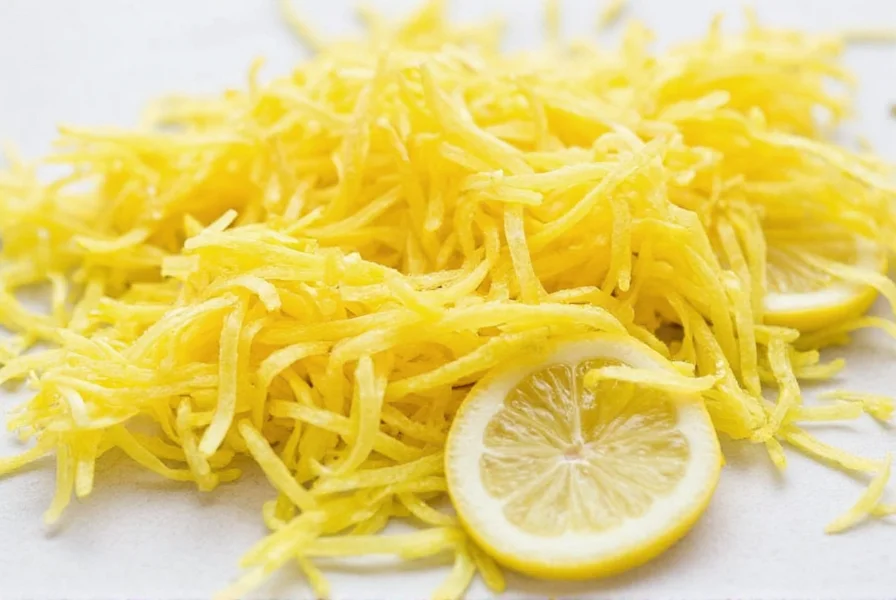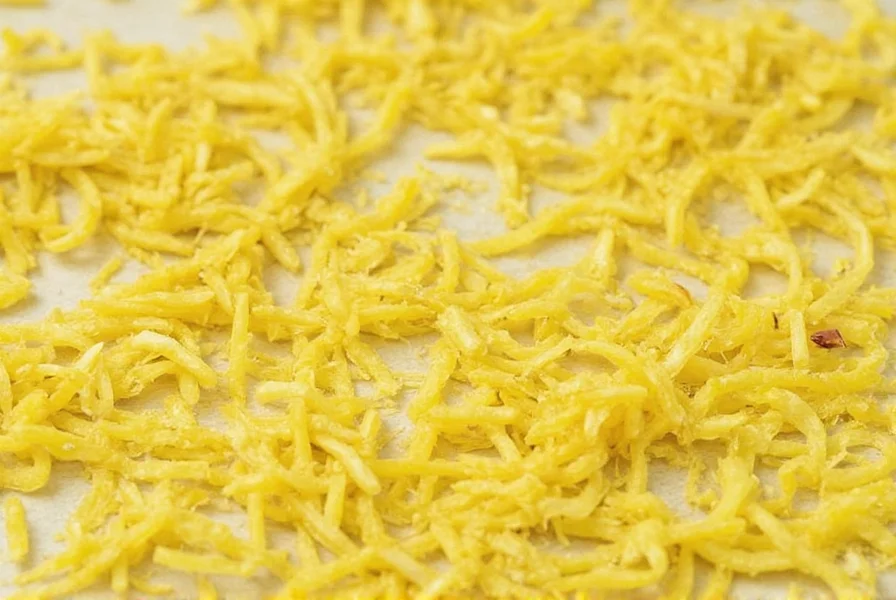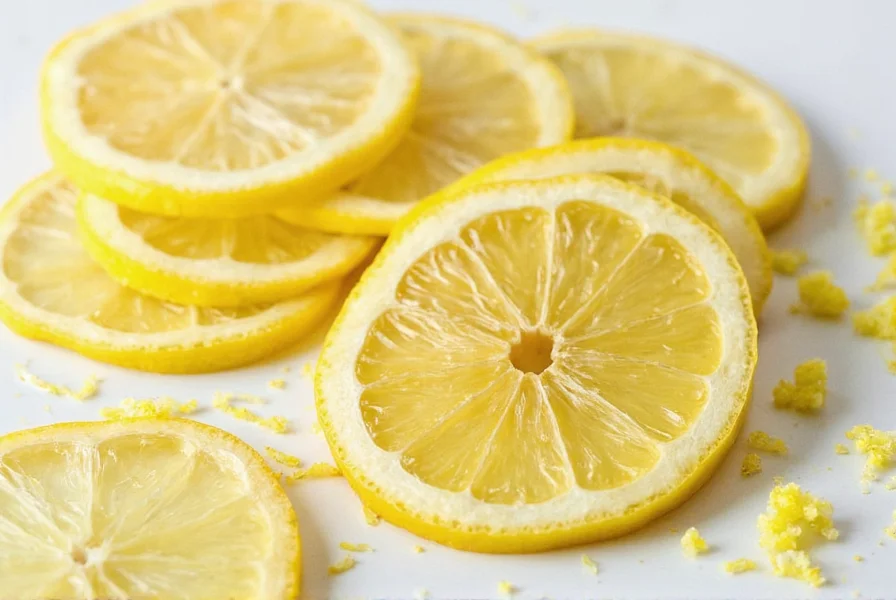Drying lemon zest is a simple yet valuable technique for preserving citrus flavor when fresh lemons aren't available. Whether you've harvested more lemons than you can use immediately or want to stock up for future baking projects, properly dried lemon zest maintains much of its aromatic oils and can be reconstituted for use in recipes. This guide covers the most reliable methods for drying lemon zest while preserving maximum flavor and aroma.
Why Preserve Lemon Zest?
Lemon zest contains the highest concentration of flavorful citrus oils in the fruit, making it a prized ingredient in baking, cooking, and even homemade beauty products. Unlike lemon juice, which loses potency when frozen, dried zest maintains its essential oils remarkably well when properly preserved. Dried lemon zest offers several advantages:
- Extended shelf life compared to fresh zest
- Concentrated flavor profile ideal for baking
- Space-efficient storage for seasonal citrus
- Versatility in both sweet and savory applications
- No waste when you only need zest but not juice
Preparing Lemon Zest for Drying
Before you begin the drying process, proper preparation ensures the best results. Start with organic lemons whenever possible, as conventional lemons often have wax coatings that can affect flavor and preservation.
Wash lemons thoroughly under warm running water, using a soft brush to remove any surface residues. Pat completely dry with a clean towel. Use a microplane or fine grater to remove only the colored outer layer (zest), avoiding the bitter white pith underneath. For optimal drying results, spread the freshly grated zest in a single layer on a clean surface to begin releasing some surface moisture before transferring to your chosen drying method.

Three Effective Methods for Drying Lemon Zest
Air Drying Lemon Zest
Air drying is the simplest method requiring no special equipment, though it takes the longest time. This traditional approach works best in dry climates with low humidity.
Spread the zest in a single, thin layer on a clean parchment paper-lined tray. Place in a well-ventilated area away from direct sunlight. Stir the zest gently every few hours to ensure even drying. Complete drying typically takes 24-48 hours, depending on humidity levels. The zest is ready when it becomes brittle and snaps easily when bent.
Oven Drying Lemon Zest
Oven drying provides faster results with more controlled conditions. This method works particularly well for how to dry lemon zest at home when you need it relatively quickly.
Preheat your oven to its lowest setting, ideally between 150-170°F (65-77°C). Spread zest in a single layer on a parchment-lined baking sheet. Place in the oven with the door slightly ajar to allow moisture to escape. Check every 15-20 minutes, stirring gently. Drying time typically ranges from 45 minutes to 2 hours. Remove when zest is completely dry and brittle.
Using a Food Dehydrator
For those wondering what is the best method to dry lemon zest, a food dehydrator offers the most consistent results with minimal effort. Dehydrators maintain precise low temperatures ideal for preserving delicate citrus oils.
Spread zest in a single layer on dehydrator trays. Set temperature to 95-115°F (35-46°C). Dry for 1-3 hours, checking periodically. The exact time depends on your dehydrator model and the thickness of your zest layer. Properly dried zest will be completely brittle with no moisture remaining.
| Drying Method | Temperature | Time Required | Best For |
|---|---|---|---|
| Air Drying | Room temperature | 24-48 hours | Low-humidity environments, no equipment needed |
| Oven Drying | 150-170°F (65-77°C) | 45 min-2 hours | Quick results, controlled environment |
| Dehydrator | 95-115°F (35-46°C) | 1-3 hours | Most consistent results, preserves flavor best |
Proper Storage of Dried Lemon Zest
How you store dried lemon zest significantly impacts its shelf life and flavor retention. After drying, allow the zest to cool completely to room temperature before storing to prevent condensation.
Transfer to an airtight container, preferably dark glass or opaque material to protect from light. Store in a cool, dark place away from heat sources. Properly stored dried lemon zest maintains optimal flavor for 4-6 months. For extended storage up to one year, keep in the freezer in a vacuum-sealed container.
Always check for any signs of moisture or mold before using stored zest. If the dried zest has darkened significantly or developed an off smell, it's best to discard it.

Using Dried Lemon Zest in Recipes
Understanding how to use dried lemon zest in recipes properly is crucial for best results. Dried zest has a more concentrated flavor than fresh, so you'll need to adjust quantities accordingly.
As a general rule, use 1 teaspoon of dried lemon zest to replace 1 tablespoon of fresh zest. For baked goods, add dried zest directly to dry ingredients. In sauces or beverages, you may want to reconstitute the zest first by soaking in a small amount of warm liquid for 10-15 minutes.
Dried lemon zest works particularly well in:
- Cake and cookie recipes
- Homemade teas and infusions
- Spice blends and rubs
- Homemade cleaning products
- Body scrubs and bath products
Troubleshooting Common Drying Issues
Even with careful preparation, you might encounter some challenges when dehydrating lemon zest properly. Here are solutions to common problems:
Issue: Zest is browning during drying
Solution: Temperature is too high. Reduce oven or dehydrator temperature and ensure even air circulation.
Issue: Zest remains moist after recommended drying time
Solution: Humidity may be affecting the process. Extend drying time, stir more frequently, or consider using a dehumidifier in the room.
Issue: Dried zest has lost much of its aroma
Solution: Over-drying or excessive heat likely evaporated the essential oils. Try lower temperatures and check more frequently during the drying process.
Frequently Asked Questions
Can I dry lemon zest with a microwave?
While possible, microwave drying is not recommended for lemon zest as it often leads to uneven drying and can cause the delicate oils to evaporate too quickly, resulting in diminished flavor. The intense heat can also cause burning before the zest is properly dehydrated. Traditional methods like air drying, oven drying at low temperatures, or using a dehydrator preserve flavor better.
How can I tell when lemon zest is completely dry?
Properly dried lemon zest should be completely brittle and snap easily when bent. It should have no visible moisture and feel dry to the touch with no flexibility. When stored in an airtight container, it shouldn't clump together. If you're unsure, leave a small sample out for 24 hours - if it remains dry and brittle, it's ready for storage.
Does dried lemon zest lose its flavor over time?
Dried lemon zest gradually loses potency but maintains good flavor for 4-6 months when stored properly in an airtight container away from light and heat. After 6 months, the flavor becomes more subtle but remains usable for up to a year. For longest shelf life, store in the freezer. The essential oils in zest are volatile, so proper storage is key to preserving maximum flavor.
Can I use dried lemon zest instead of lemon extract?
Yes, dried lemon zest can substitute for lemon extract in many recipes, though the flavor profile differs slightly. Use 1 teaspoon of dried zest for every 1/2 teaspoon of extract. Since dried zest provides both flavor and texture, it works best in recipes where texture matters, like baked goods. For beverages or sauces where you want pure flavor without particles, you may want to steep the dried zest in warm liquid first, then strain.
Should I wash lemons before zesting for drying?
Absolutely. Always wash lemons thoroughly before zesting, especially if you plan to dry the zest for later use. Conventional lemons often have wax coatings and pesticide residues that concentrate in the zest. Use warm water and a soft brush to clean the surface, then pat completely dry before zesting. For best results, choose organic lemons when possible for drying, as they're less likely to have chemical residues.











 浙公网安备
33010002000092号
浙公网安备
33010002000092号 浙B2-20120091-4
浙B2-20120091-4